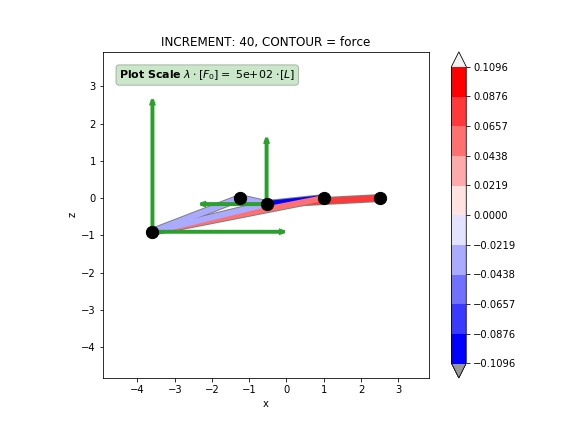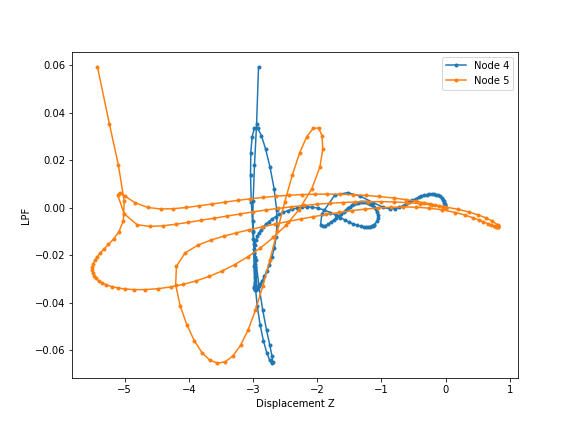TrussPy is a 3D Truss-Solver written in Py-thon which is capable of material and geometric nonlinearities. It uses an object-oriented approach to structure the code in meaningful classes, attributes and methods. TrussPy contains both multistep functionality (multiple loadcase analysis with sequenced external forces) and an adaptive method to control incremental stepwidths. Input files may be written in Excel or directly in Python. A simple post-processing inside TrussPy is directly available via Matplotlib. Model Plots whether in undeformed or deformed configuration with optional contour plots on element forces are easy to show. They may also be generated for a series of increments and saved as a GIF Movie. Last but not least History (a.k.a. x-y) Plots for a series of increments or Path Plots along a given node path may be generated for nodal properties (displacements, forces) or global quantities like the Load-Proportionality-Factor (LPF).
Official Documentation: https://adtzlr.github.io/trusspy/
Installation
Either use pip to install TrussPy (recommended, but not yet available!)
pip install trusspy
- or download this repo as ZIP-file, unzip it and add the unzipped location to your PYTHONPATH. On Windows 10:
open startmenu
search for "environment variable"
edit environment variable for this account
- New... (user variable)
- variable name: PYTHONPATH
- variable value: C:\Path\to\trusspy_package\
to verify the correct path C:\Path\to\trusspy_package\ this directory should contain the following files and folders:
+ docs\ + tests\ - e101\ - e102\ - ... + trusspy\ - core\ - handlers\ - model.py - ... README.rst LICENSE
Example
import trusspy as tp
M = tp.Model(logfile=False)
with M.Nodes as MN:
MN.add_node( 1, coord=( 0, 0, 0))
MN.add_node( 2, coord=( 1, 0, 1))
MN.add_node( 3, coord=( 2, 0, 0))
with M.Elements as ME:
ME.add_element( 1, conn=(1,2), gprop=[1] )
ME.add_element( 2 ,conn=(2,3), gprop=[1] )
E = 1 # elastic modulus
ME.assign_material( 'all', [E])
with M.Boundaries as MB:
MB.add_bound_U( 1, (0,0,0) )
MB.add_bound_U( 2, (0,0,1) )
MB.add_bound_U( 3, (0,0,0) )
with M.ExtForces as MF:
MF.add_force( 2, ( 0, 0,-1) )
M.build()
M.run()
M.plot_model(config=['undeformed','deformed'],
inc=20,
force_scale=2,
contour='force'
)
M.plot_history(nodes=[2,2], X='Displacement Z', Y='LPF')
